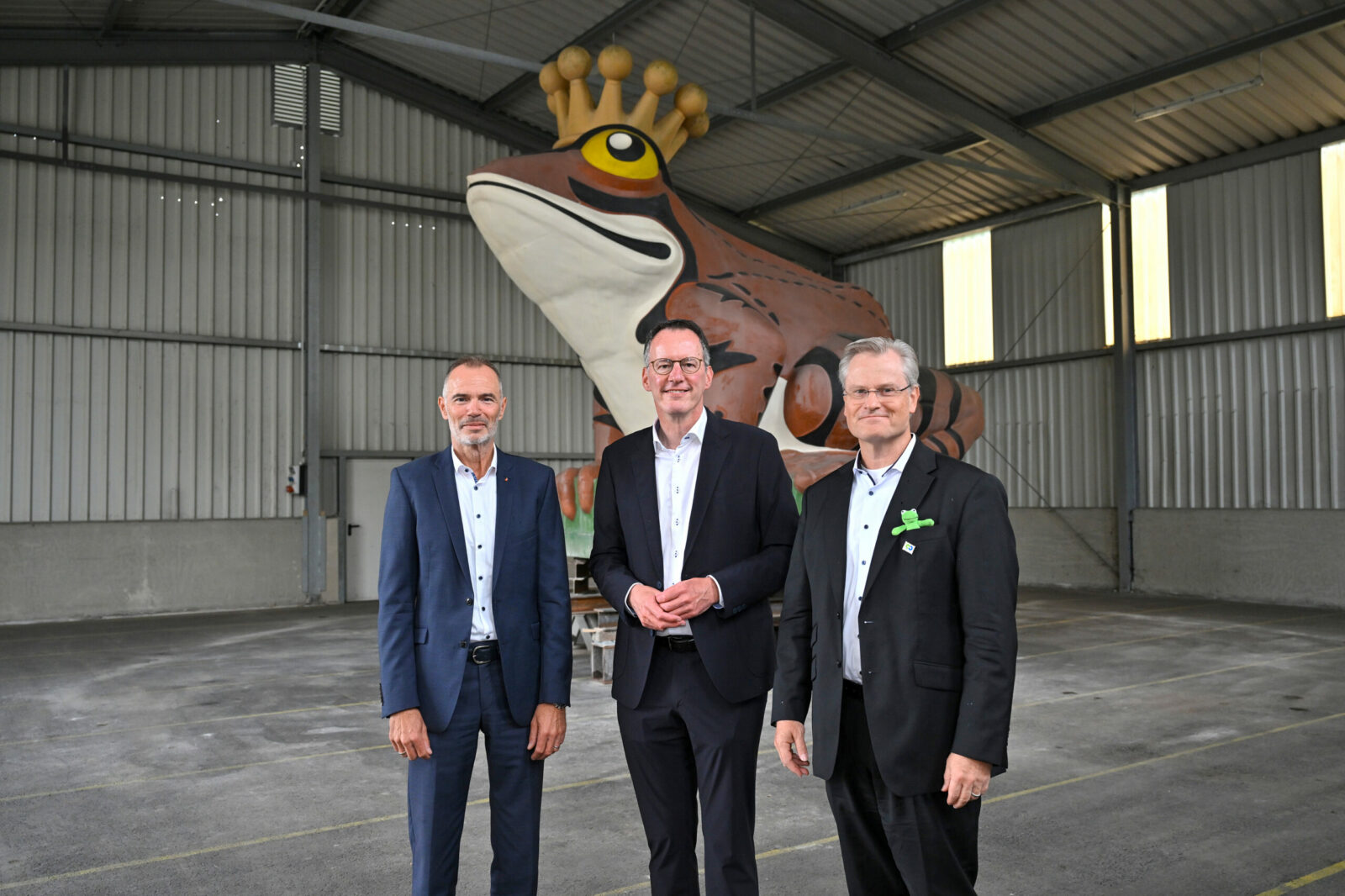Minister of the Interior Michael Ebling visits Werner & Mertz
The listed Erdal Frosch has become a Mainz landmark over the years. First known as the brandmark of Erdal, the red frog topped with a crown later became the corporate logo of Werner & Mertz. The large illuminated sign built in 1959 was soon a familiar sight in Mainz. Until 2019 it was highly visible on the rooftop of the cleaning products company located near the Rhine. As part of factory restructuring plans, experts carefully moved the frog to a protected hall, where they examined its construction and general condition. Then they developed a conservation concept and proposals for its restoration.

With close connections to the region
The state has provided 50,000 EUR for the work of conserving and protecting the monument. To publicly acknowledge this financial support, the Rhineland-Palatinate State Minister of the Interior Michael Ebling paid a visit to Werner & Mertz headquarters.
“As a Mainz-based company and pioneer for environmentally friendly cleaning products, Werner & Mertz has not only revolutionized the cleaning industry, but also has contributed greatly to the sustainable development of Rhineland-Palatinate. With its jobs, innovative strength and engagement in environmental protection, the company has been a driving force for economic growth and ecological responsiblilty in the region for the past 150 years. The Erdal-Frosch, a conspicuous brand and landmark, is known far beyond the borders of our state. So I am happy that we can support the restoration of the historic frog figure with monument conservation funds from Rhineland-Palatinate ,“ said Interior Minister Ebling.
Unique in Europe
The restoration is directed by Friederike Waentig, professor for Conservation and Restoration of Art and Cultural Property at the Technische Hochschule Köln (University of Technology, Arts & Sciences).
“I believe that the frog, an advertising sculpture of glass-reinforced polyester, is unique in Europe. The size is just one of the challenges for its conservation. The fields of monument conservation and restoration have no experience with such a sculpture; we are developing methods on how to clean and protect the frog. For researchers, it is a fascinating object of study, but for the owner, the work involves a certain amount of risk. In the coming years we will observe together how effective our measures turn out to be.”
According to the plans, the restoration will take some more months. After the frog has been cleaned and its defective parts repaired, the concrete base will be restored. The work continues with the complex installation of new energy-saving lighting and a new paint job in which the paint is applied to an intermediate layer so that the original paint is retained for monument conservation reasons. In the future, the highly visible frog will again greet the people of Mainz from its Rheinallee rooftop.



